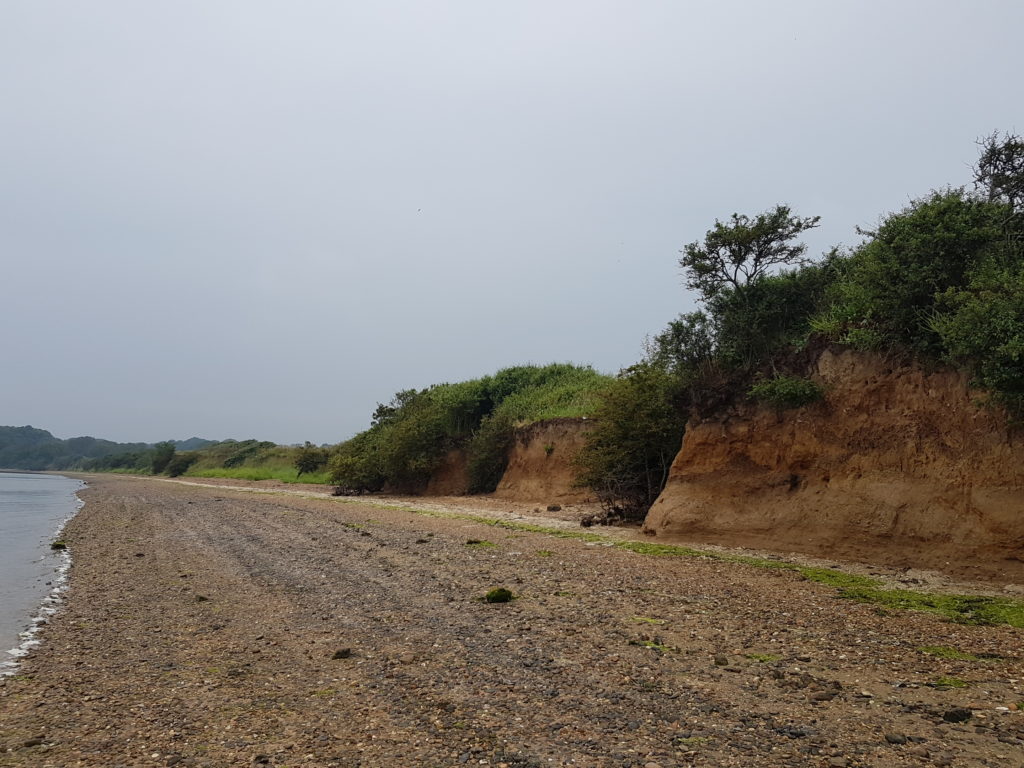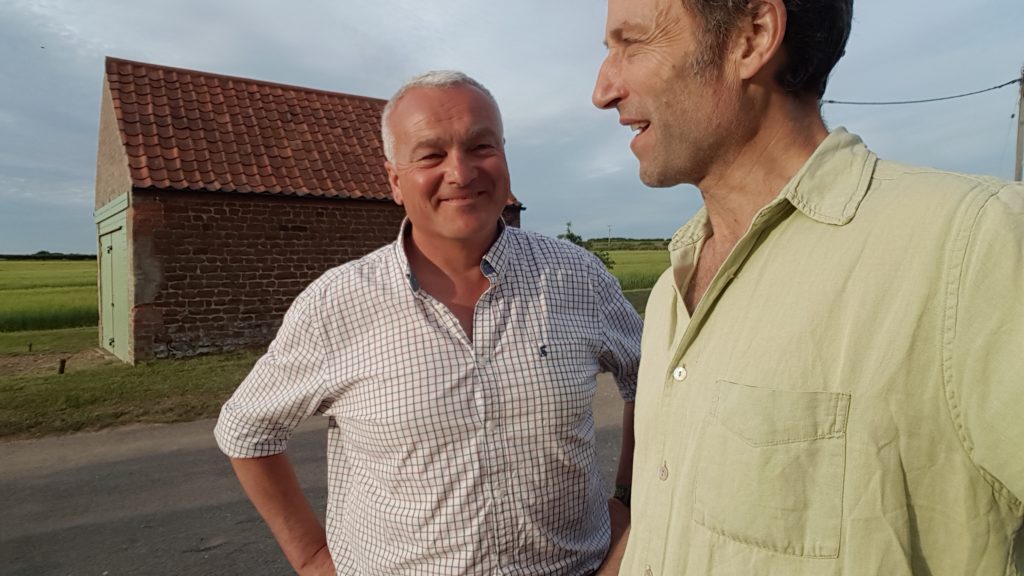Time to get off the mountain. Close the gap between years’ of telephone conversations and direct messages. A road trip around East Anglia listening, face to face, to what people think rather than what they say.
A brief history to ‘field intel’ trips. My first one was along The Marches via train and bike. The next was in northern England, southern Scotland with forester, raptor expert, farmers etc. To gain knowledge – preferably in the field – then seek to join the dots. A revisitation of the area ongoing, March 2025…
N for Norfolk (via C for Cambs)
Slipping in via the north west frontier near Peterborough, I fortified myself over a sandwich-fuelled conversation with a media-savvy farmer on issues around communicating farming today. Without any oat-based milk to hand – another story – this blog hints as to how socially slick multinational ‘mind control’ operators are courting new markets while upsetting ‘old ways’.

Scrub and stuff
I nipped up to the Norfolk coast to meet an ex land manager nee ecologist very active on social media. He had ripped up paving slabs on his garden so he could watch turtle doves feed on weed seeds. Our chat covered deer, Lyme’s disease, gamekeepers’ role, animal rights muddying the water around wildlife conservation – especially when it came to removing rats from islands.

I was introduced to a book way ahead of its time: directed at ‘politicians, administrators, farmers and businessmen to take conservation seriously …to integrate it with other activities’, demonstrates how issues of yesterday are the zeitgeist today.

Next up was a double bill of wilder stuff. A tour of a three part estate. Marshes managed with predator control for wading birds, a mixed farm managed by a Farmer’s Weekly award winner, and a wilder area of free-roaming ponies, pigs and cows with beavers fenced in a wood and a larger bird of prey* to be added shortly.

A wander around a nearby bird reserve allowed me to garner views from locals on such a bird*. Roaming from the Isle of Wight, it roosted near a pig unit while feasting on nearby black-headed gulls. Gossip, eh! Not heeded, but could be perhaps, to help better framing of official consultations.
Evidence is important but perception matters
Acres of chat
Down to West Acre for a zig zag tour over ash logs across the river Nar, nettle-thick managed mixed woodland, and flower-rich grasslands with squat oak saplings regenerating between viper’s bugloss*. Sausages over a cooker with coffee.

Much of the land is not nutrient-rich productive farmland. This adaptively managed restoration, with practitioners aided by selected ecologists, blended with low key back-seat landowner, seems to work well. No lurid headlines. Just plenty of trust built over years with neighbouring traditional farmers, enables this estate to deliver a range of landscape-scale projects.
“Don’t let the [agri-enviro] scheme wag the dog”
A land manager
Four crop spoonbills
A breather on the north Norfolk coast. All 25,000 acres of it. Home to farming’s 4 crop rotation history, RAMSAR wetland (spoonbill here), National Nature Reserve, host to thousands of dog walkers, hedgerow healer-in-residence. “Governed by the landscape, not seeking to control it”.
Heterogeneity is a fav word of mine and of this conservation manager. Probable not to many others. But all it means is diversity. Across landscapes, farming practices, cropping and stocking – all of which includes ‘intensively’ managed land, alongside ‘extensively’ managed land in the same space.

AB8 – in field, not tick box
Tea with a retired farmer who managed 200,000 acres across Europe, helped set up Nuffield Farming Scholarships and created Kingfishers Bridge Nature Reserve, was a treat.
Then on to meet land managers and farmers working within constraints, uncertainties and opportunities of evolving agri-enviro schemes in Suffolk. I could not help but think of this quote headlining here, as to how proud farmers are of what wildlife they look after.

However, individual bespoke, innovative thinking does not always fit with RPA-administered monies for public goods. “Computer says no” can stymie adaptive habitat management. Another unspoken result of the Common Agricultural Policy is that some farmers lost connection with a ‘generation of nature’ as tick box subsidies blinded the need to steward the environment.

I can’t help but think the CAP has left a legacy we must repair in time for a new era of land managers, farmers, foresters to co-design environmental recovery while employing smarter, incl tech, land-based practices for food and nature. Here’s a piece on Ecological intensification on ‘farming wildlife like a crop’.
In search of ‘evidence-based policy, not policy-driven evidence’
RY

Twitch and lynx
Yes, being obtuse here, as I’m seek to keep you on the ball, not be distracted by the person. (Twitter, a fiend not friend, on that aspect.)
After 10 years of backroom direct messaging, it was great to meet up with an eNGO rep working close to the ground. With sand martins nesting in collapsing tree-heavy banks on an estuary, we chewed the cud. On why counting wildlife could be less partisan, understanding degrees of birding – patch, nesters, twitchers, listers – and why farmers cut (or cut out) corners.

Landowners are wondering what to do with tracts of less productive land. Some court the eye of public opinion on a ‘wild’ subject increasingly pulled, politically, from pillar to post. ‘Rowing back from heavy farming of heavy land, while doing more regenerative farming on lighter land’ sounds sensible: even if it’s open to being framed by the media in more exciting ways. The scale of public accessible land in East Anglia enables a wider range of land use options – not open to all farmers across remoter parts of the UK.

This can create different reactions or tensions within diverse audiences being courted. Just as the phrase “weaponising nature” may be viewed differently by someone living in a city centre to another keeping aphids from destroying a crop.
Dots joining

Towards the end of the week (17 meets, 1k miles, uncounted carbon, offset here), I was on a ‘high’ on thoughts and ideas stimulated from the plethora of face-to-face meetings. To those who say Zoom is the way forward, I say ‘pah’.
To the final three people on Friday – farmer, a farming union vice president, and agri-academic – I say ‘sorry’ for interrupting when the dots kept joining up. Yes, I did listen, and make notes. One is an organic top quartile. Another invented the CALM carbon calculator and is examining bullrushes in all their sustainable uses. The other has acres of village-benefiting woodland on his farm. You don’t need me to join the dots in how progressive they all are.

Gold, silver, bronze
This trip was fairly intense. As you might have gathered! Time and space is required to think before acting on long-term outcomes. We could do more linking up common ground which is often missed in the speed of today’s urgency.
There’s no silver bullet, no gold gong, no bronze statue – just a copper-bottomed need to relearn from past skills, heal from the CAP, learn from each other, cross bridges and lean over non-ideological bipartisan gates in the transition ahead.



ps – this is an adaptive blog which may move, update or reverse at any time, without warning…. revisiting the area March 2025 – rough adaptive below



Love it, and a pleasure to host you on the Cambridgeshire side of the Norfolk border…